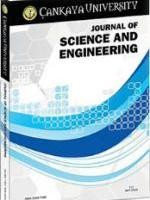Optimized Three-step Hybrid Block Method for Stiff Problems in Ordinary Differential Equations
Optimized Three-step Hybrid Block Method for Stiff Problems in Ordinary Differential Equations
Optimized Hybrid Methods, Singularity, Stiff Problems, Intra-step Points,
___
- [1] W. E. Milne, Numerical Solution of Differential Equations, John Wiley and Sons, New York, 1953.
- [2] H. Ramos, “An Optimized Two-step Hybrid Block Method for Solving First-order Initial-value Problems in ODEs,” Differential Geometry-Dynamic System, vol. 19, pp. 107-118, 2017.
- [3] O. A. Akinfenwa, S. N. Jator, and N. M. Yao, “Continuous Block Backward Differentiation Formula for Solving Stiff Ordinary Differential Equations,” Computers and Mathematics with Applications , vol. 65, pp. 996-1005, 2013.
- [4] H. Musa, M. B. Suleiman, and N. Senu, Fully “Implicit 3-point Block Extended Backward Differentiation Formula for Stiff Initial Value Problems,” Applied Mathematical Sciences, vol. 6, pp. 4211-4228, 2012.
- [5] H. Musa, M. B. Suleiman, F. Ismail, N. Senu, and Z, B. Ibrahim, “An Improved 2-point Block Backward Differentiation Formula for Solving Stiff Initial Value Problems,” AIP Conference Proceedings, 2013, no. 1522, 211.
- [6] J. Sunday, M. R. Odekunle, A. A. James, and A. O. Adesanya, “Numerical Solution of Stiff and Oscillatory Differential Equations Using a Block Integrator,” British Journal of Mathematics and Computer Science, vol. 4, no. 17, pp. 2471-2481, 2014.
- [7] H. Ramos, Z. Kalogiratou, Th. Monovasilis, and T. E. Simos, “A Trigonometrically Fitted Optimized Two-step Hybrid Block Method for Solving Initial Value Problems of the form ?′′=?(?,?,?′) with Oscillatory Solutions,” AIP Conference Proceedings, 2015, no. 1648, 810007.
- [8] H. Ramos and P. Popescu, “How Many ?-step Linear Block Methods Exist and which of them is Most Efficient and Simplest One?,” Applied Mathematics and Computation, vol. 36, pp. 296-309, 2018.
- [9] G. Singh, A. Garg, V. Kanwar, and H. Ramos, “An Efficient Optimized Adaptive Step-size Hybrid Block Method for Integrating Differential Systems,” Applied Mathematics and Computation, vol. 362, 124567, 2019.
- [10] M. O. Ogunniran, O. A. Tayo, Y. Haruna, and A. F. Adebisi, “Linear Stability Analysis of Runge-Kutta Methods for Singular Lane-Emden Equations,” Journal of Nigerian Society of Physical Sciences, vol. 2, pp. 134 – 140, 2020.
- [11] J. D. Lambert, Computational Methods in Ordinary Differential Equations, John Wiley and Sons, New York, 1991.
- [12] P. Henrici, Discrete Variable Methods in Ordinary Differential Equations, John Wiley and Sons, New York, 1962.
- [13] Z. B. Ibrahim, K. I. Othman, and M. Suleiman, “Implicit ?-block Backward Differentiation Formula for Solving First-order Stiff ODEs,” Applied Mathematics Computation, vol. 186, pp. 558-565, 2007.
- Yayın Aralığı: Yılda 2 Sayı
- Başlangıç: 2009
- Yayıncı: Çankaya Üniversitesi
Optimized Three-step Hybrid Block Method for Stiff Problems in Ordinary Differential Equations
Muideen OGUNNİRAN, Yahaya HARUNA, Rapheal ADENİYİ, Morufu Oyedunsi OLAYİWOLA
Convergence of the Associated Filters via Set-Operators
Takashi NOİRİ, Sk SELIM, Shyamapada MODAK
A Comparative Performance Analysis of HLLC and AUSM+-up Riemann Solvers
Daniel ABODE, Omowumi OLASUNKANMİ, Waliu O. APENA, Samson A. OYETUNJI
Discussion on Some Common Properties of Hilbert Space and Topological Space
Ashoke DAS, Sahın Injamamul ISLAM
High Performance Low Latency Parallel Successive Cancelation Decoder Structures for Polar Codes
